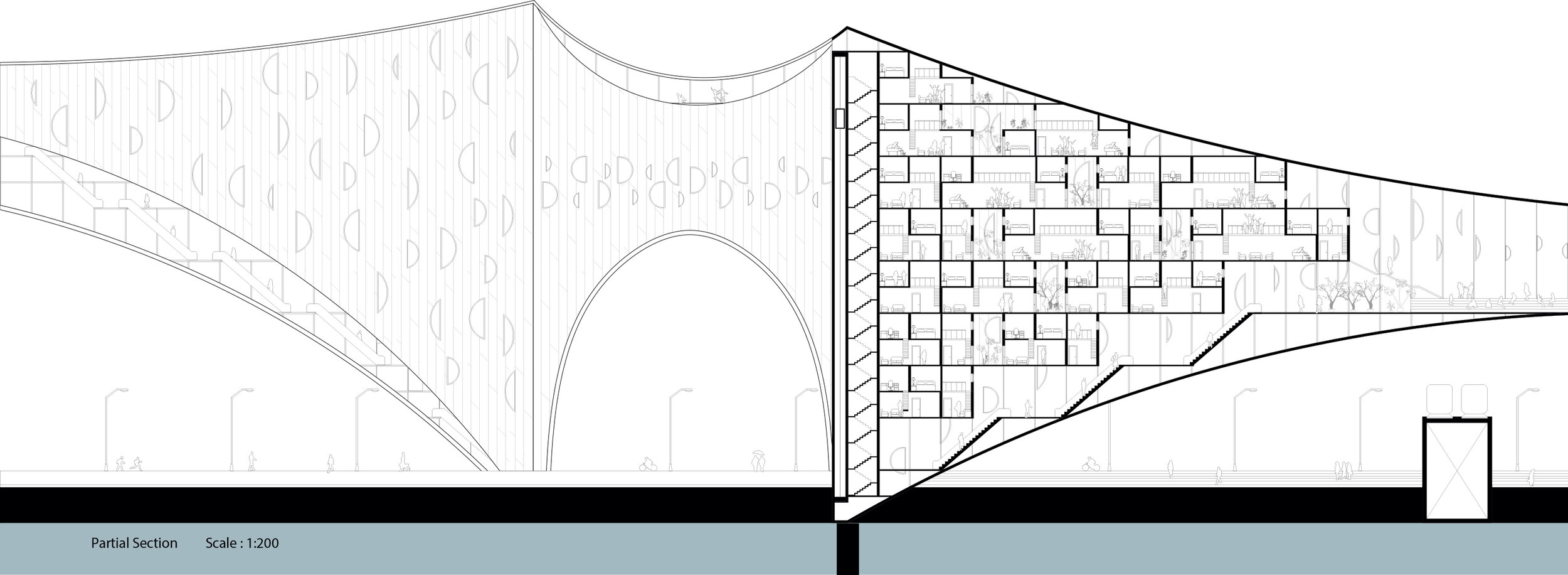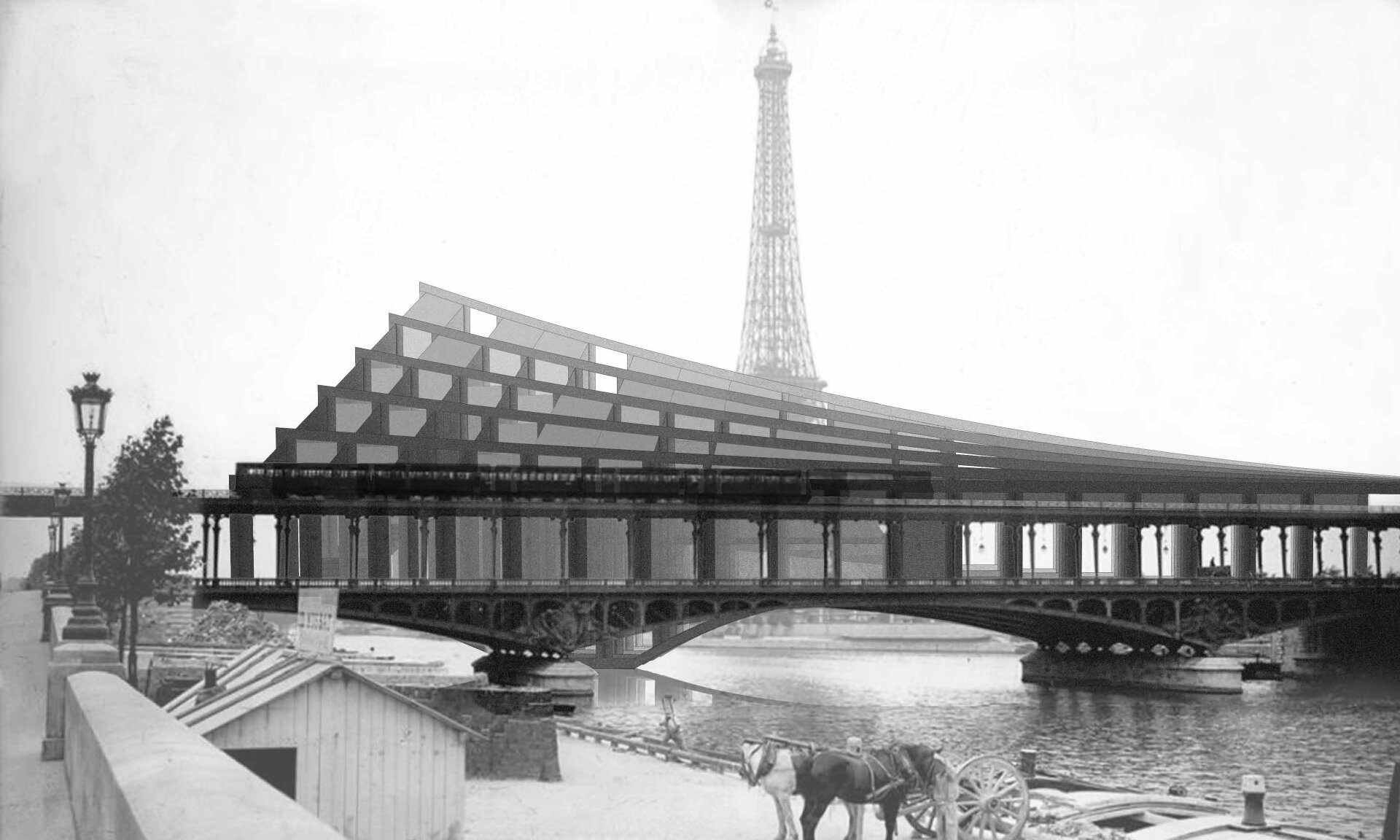ENG |
The purpose of the studio is to explore the architectural scale of large urban infrastructures.
The capacity to merge urban and architectural scales through radical exploration of the ambiguity between superstructure (above ground) and infrastructure (below) creates an opportunity to escape the plan based tradition of urbanism and explore sectional strategies.
The notion of inhabited infrastructures is a way to move beyond the traditional make of city scape (street, urban block, lot, building) and explore inversions and mutations of these four scales of urban fabric, not as a way to erase the city but as a way to invent different ways to intervene in metropolitan contexts which are incredibly layered, complex, and intertwined. These explorations are especially relevant in contexts where the city fabric is interrupted by geographical barriers which create edge conditions (e.g., the Seine in Paris).
There is a very long tradition of inhabited infrastructures; historically, inhabited bridges created a continuity of the urban fabric in discontinuous situations (the bridge is literally a street within). With the emergence of urbanism as an independent discipline, this tradition disappears. Attempts at reviving this trajectory emerged in the 60’s and 70’s with the utilization of overblown architectural scales as a territorial device. From Superstudio to Rem Koolhaas, these strategies were mostly critical projects and apparatuses, pretexts for a new architectural discourse.
While addressing issues of scale and ‘bigness,’ this studio will aim to develop plausible, buildable structures that will react to site conditions, program, and technical realities. In this case, size matters and it will be the driving parameter to explore the threshold between architectural and urban practice and discourse.










